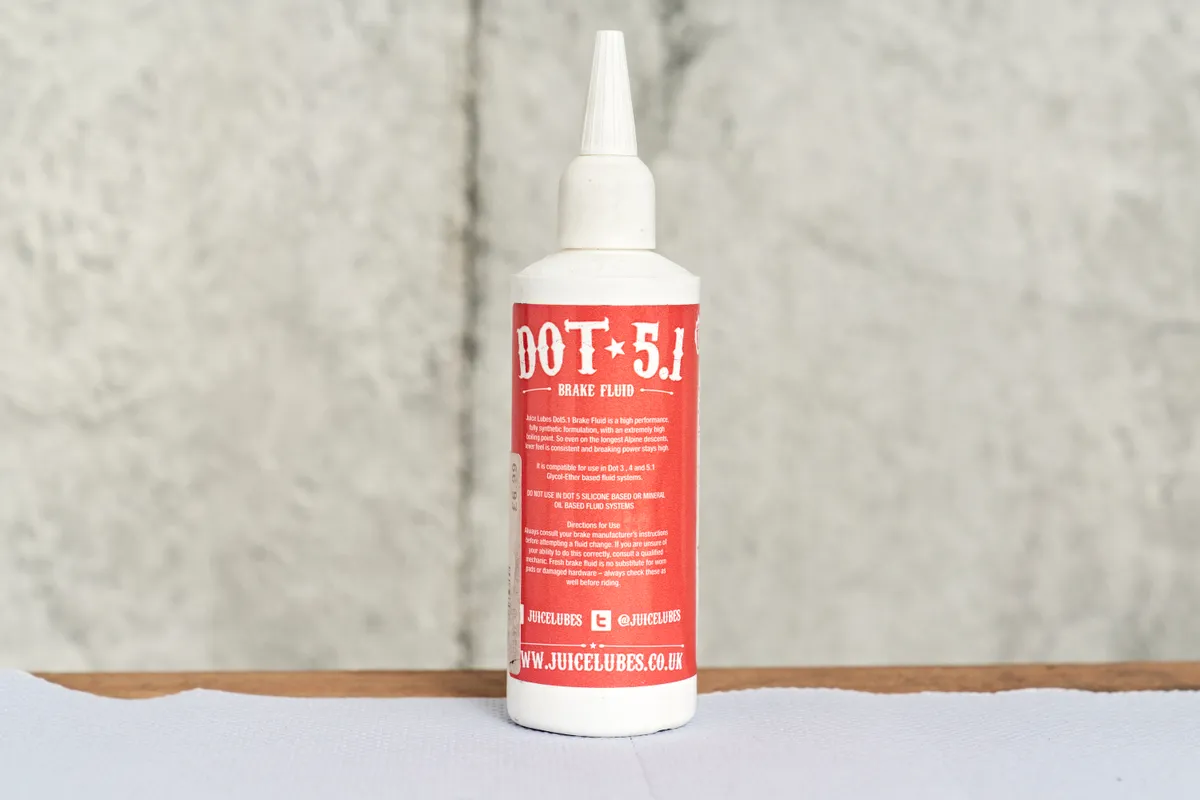Shimano has quietly launched a new type of hydraulic brake fluid – and it's already mandatory for use inside its latest top-end brakes.
Called Shimano LV Mineral Oil, this low-viscosity fluid is a thinner, faster-flowing version of the brand’s standard mineral oil – but it's not backwards-compatible. That means you can’t mix the fluids, and using the wrong one could damage your brakes.
The introduction of LV Mineral Oil is significant because it marks the first time Shimano has offered two distinct mineral-based fluids for its braking systems. For bike shops and home mechanics, stocking and identifying the correct brake fluids just got more complicated.
What is Shimano LV Mineral Oil?

The new Low Viscosity (LV) mineral oil is a lighter-weight fluid designed for specific modern brake systems.
Viscosity is a measure of a fluid's resistance to flow. Higher-viscosity fluid is thicker and lower-viscosity fluid flows faster. This is key to how quickly brake fluid transmits hydraulic pressure through the brake lines from the brake lever to the pistons.
Brake fluid must maintain a low viscosity at low temperatures to ensure proper brake function, especially in cold climates. However, it must also maintain performance at high temperatures because boiling brake fluid means a loss of braking performance.
Shimano Mineral Oil vs LV Mineral Oil

There are two distinct types of brake fluid used in hydraulic brakes: DOT fluid and mineral oil. Each has advantages and disadvantages, as described in our buyer's guide.
The pre-existing pink/red Shimano brake fluid is a mineral-based oil, which is not hygroscopic and is classified as low-toxicity. It has been Shimano’s default fluid for decades.
Standard Shimano mineral oil has a high boiling point, good lubricity and can provide a long service life between brake bleeds.
It is used in almost all of Shimano's current brake line-up, including Deore, SLX, XT, XTR, GRX, 105, Ultegra and Dura-Ace.
Crucially, it is no longer going to be the fluid used on the top-tier XTR and XT brakes.
Will the tech around this new lighter-weight fluid feature on the top-spec road bike brakes too? And will it trickle down to Shimano’s less expensive mountain bike brakes?
| Feature | Standard Mineral Oil | LV Mineral Oil |
| Viscosity | Higher | Lower |
| Best for | General Shimano brakes | High-end race brakes |
| Performance | Stable across wide range of temps | More responsive lever feel |
| Compatibility | Not compatible with LV-only brakes | Not compatible with standard systems |
Shimano has made LV Mineral Oil because it hopes to see gains in performance. This could be particularly relevant for high-speed, high-frequency use such as elite-level MTB or road racing.
Can I mix Shimano Mineral Oil and LV Mineral Oil?

Shimano says the two fluids are not interchangeable. Mixing these two different fluids could affect braking performance, sealing integrity and system reliability.
According to the parts listing on the Shimano website, the only current products compatible with the new LV Mineral Oil are:
- BL-M9200
- BL-M9220
- BR-M9200
- BR-M9220
- BL-M8200
- BR-M8200
- BR-M8220
- BR-MT805
These are the latest-generation XTR and XT MTB brake levers, and the latest four-piston XTR and XT calipers. The final item on the list is flat mount calipers for XC bikes, which Shimano says are “appearance matched with XTR/XT”.
Shimano also specifies some brake parts that can be used with both Shimano Low Viscosity Oil, and the older Shimano mineral oil:
- Hydraulic hose
- Connector insert
- Flare nut
- Olive
- Shimano bleeding tools (TL-BR001/TL-BR003)
The commonality in these parts is heartening to see, but it might make you ask what isn’t cross-compatible.
The main omissions from this list are the calipers and levers because they will have seals that are specced to suit either Shimano’s traditional mineral oil or the new low-viscosity version.
The seals prevent brake fluid from leaking out between two surfaces, and are precision-made, particularly in situations where the seal is between two moving parts.
Seals can be slightly porous, or reactive to certain fluids, and any contraction or swelling could be disastrous for your brakes, resulting in seals no longer sealing, jamming in the orifices, or disintegrating altogether.

If in doubt, it is important to check the brake lever/caliper model number and refer to Shimano’s tech documentation.
